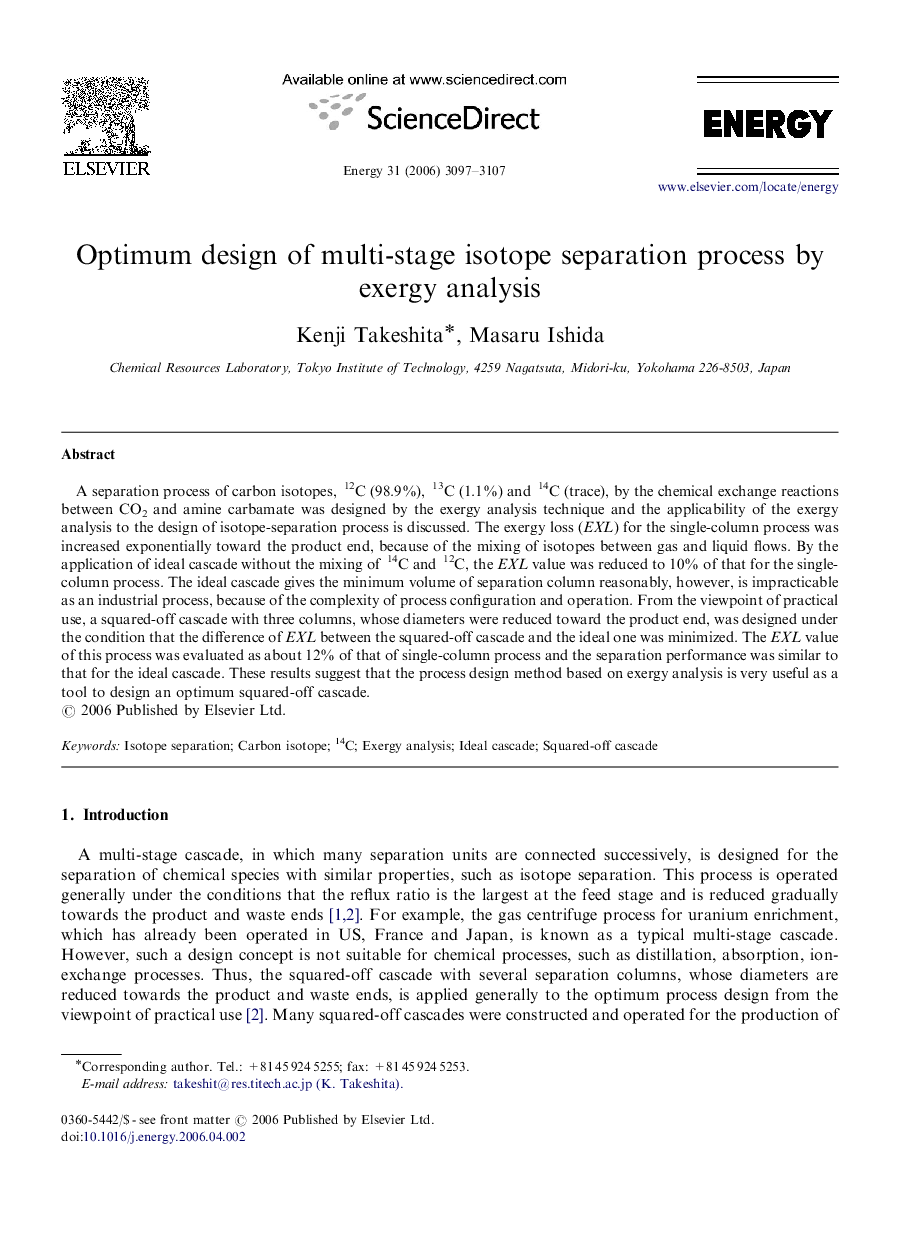| Article ID | Journal | Published Year | Pages | File Type |
|---|---|---|---|---|
| 1736086 | Energy | 2006 | 11 Pages |
A separation process of carbon isotopes, 12C (98.9%), 13C (1.1%) and 14C (trace), by the chemical exchange reactions between CO2 and amine carbamate was designed by the exergy analysis technique and the applicability of the exergy analysis to the design of isotope-separation process is discussed. The exergy loss (EXL) for the single-column process was increased exponentially toward the product end, because of the mixing of isotopes between gas and liquid flows. By the application of ideal cascade without the mixing of 14C and 12C, the EXL value was reduced to 10% of that for the single-column process. The ideal cascade gives the minimum volume of separation column reasonably, however, is impracticable as an industrial process, because of the complexity of process configuration and operation. From the viewpoint of practical use, a squared-off cascade with three columns, whose diameters were reduced toward the product end, was designed under the condition that the difference of EXL between the squared-off cascade and the ideal one was minimized. The EXL value of this process was evaluated as about 12% of that of single-column process and the separation performance was similar to that for the ideal cascade. These results suggest that the process design method based on exergy analysis is very useful as a tool to design an optimum squared-off cascade.
